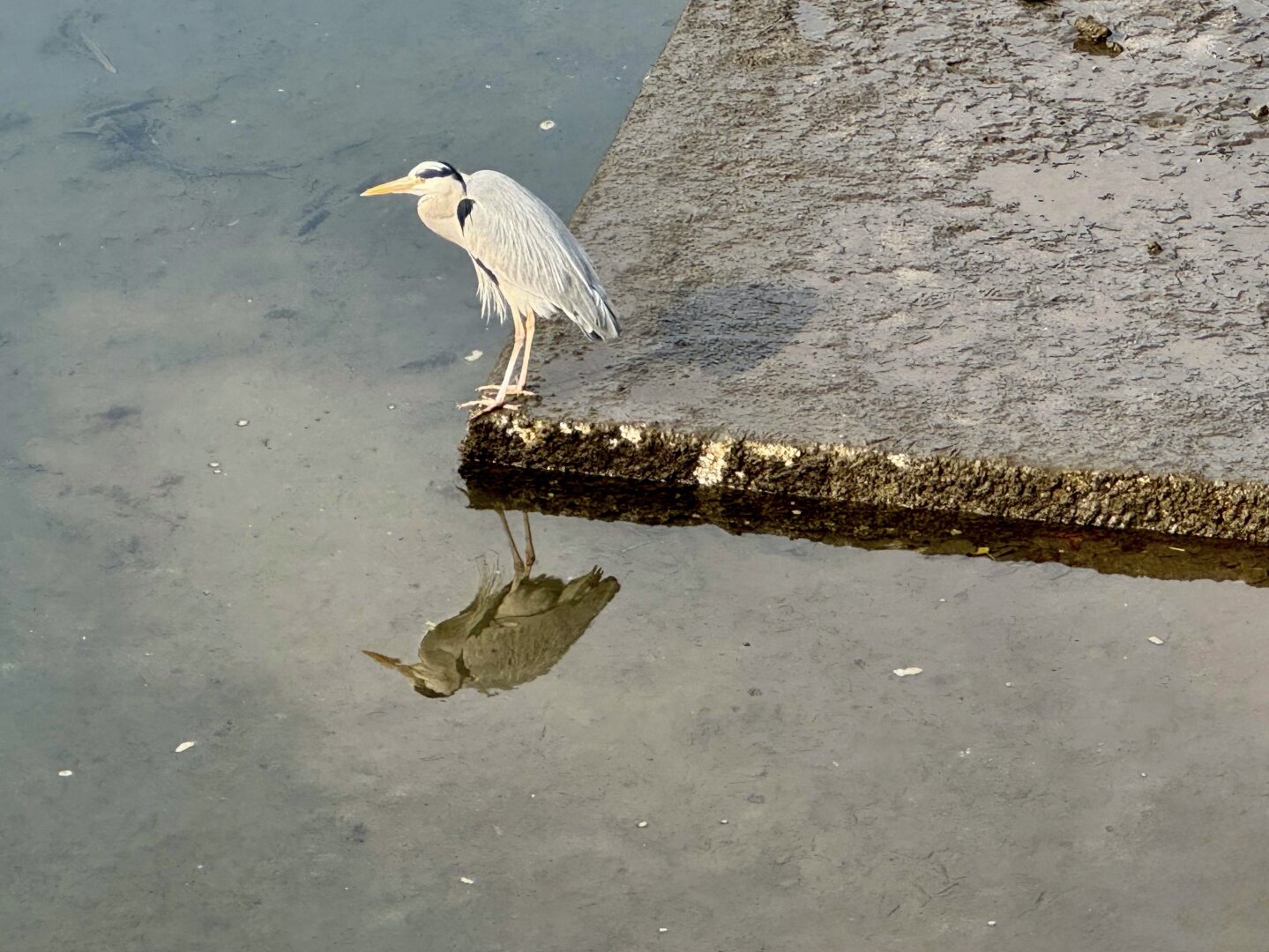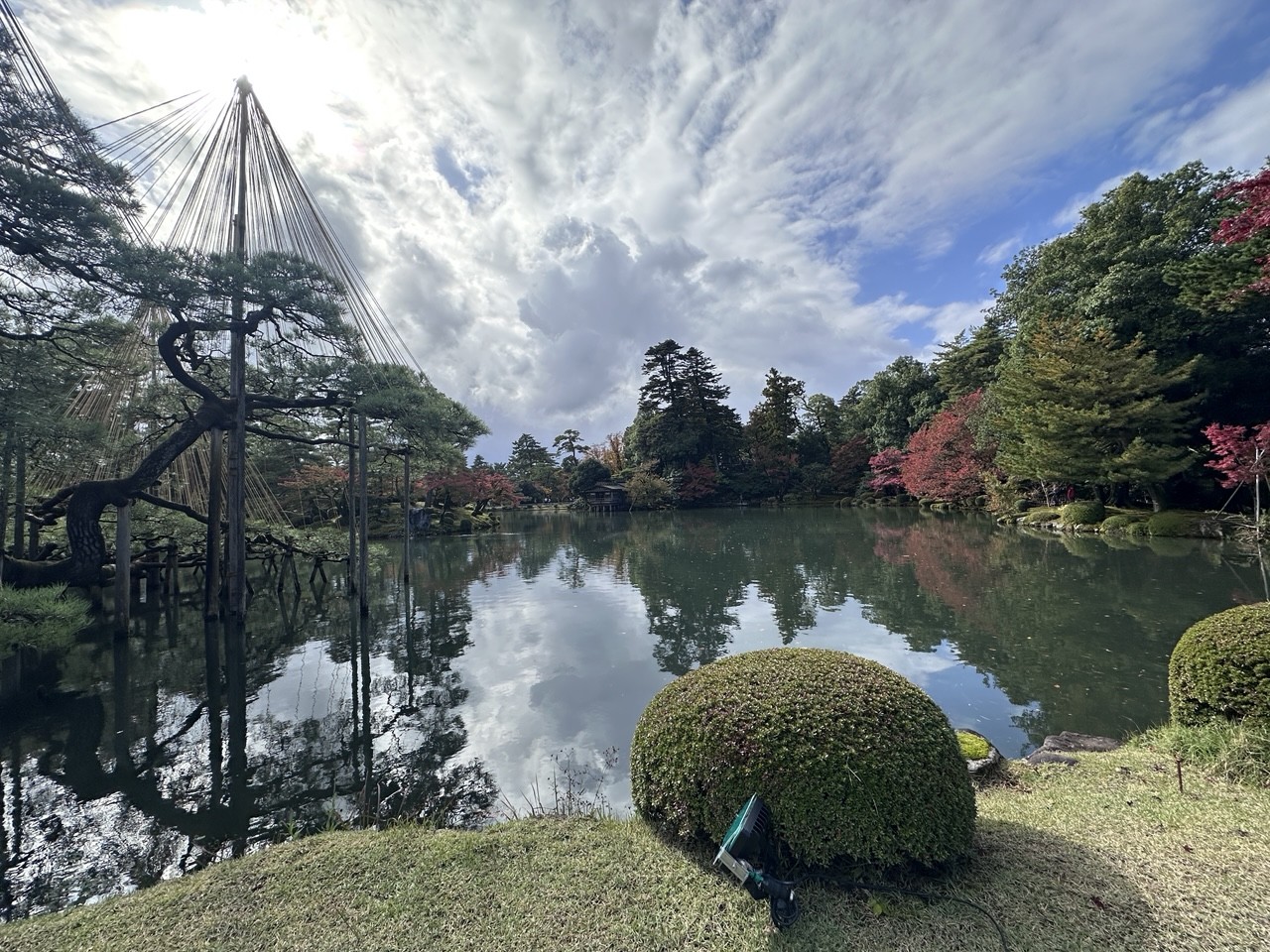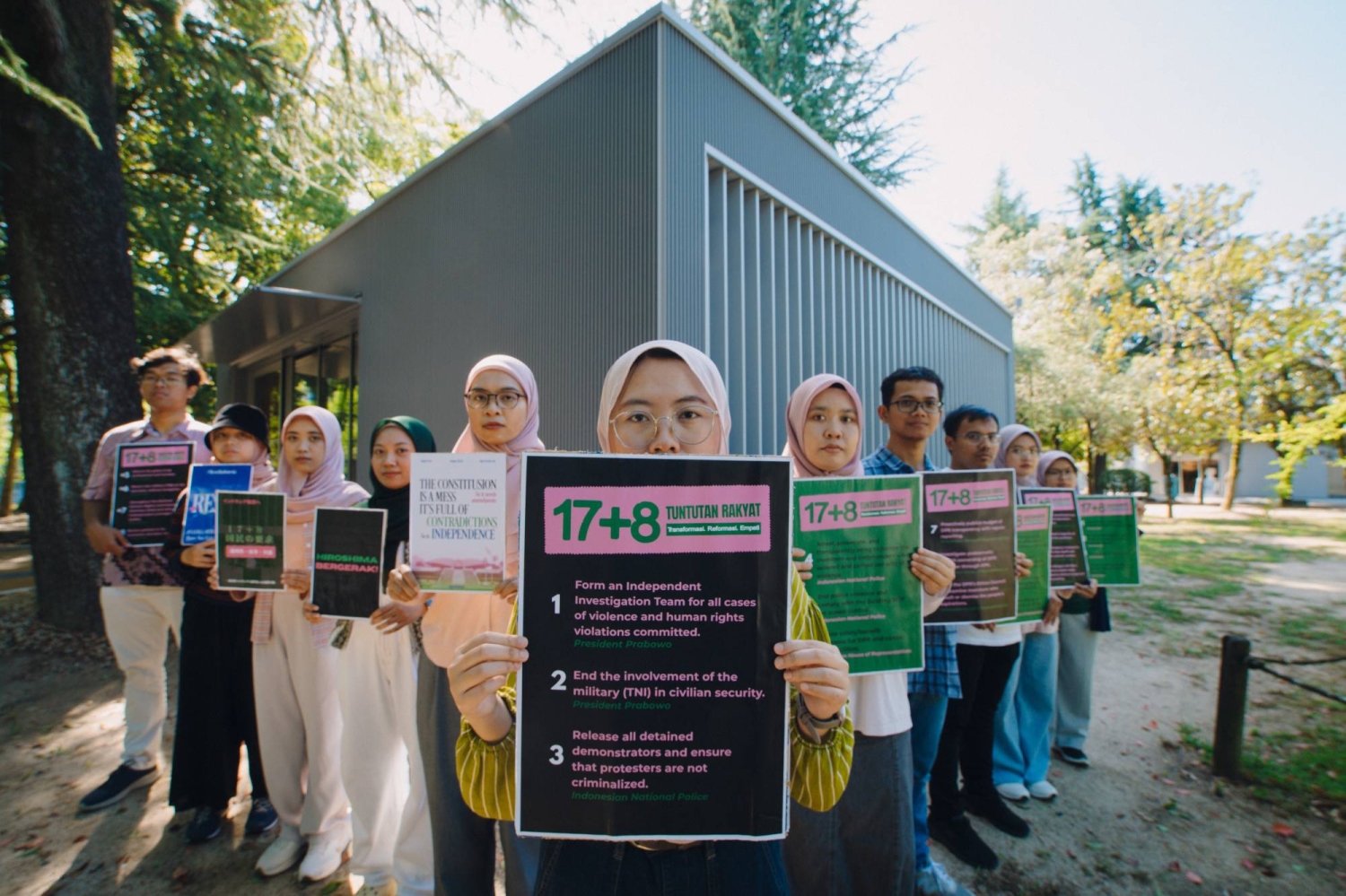In the post-survivor era, the question is not whether Hiroshima will be remembered, but whether it will continue to matter. https://www.japantimes.co.jp/commentary/2026/01/05/japan/when-the-last-hibakusha-is-gone/?utm_medium=Social&utm_source=mastodon #commentary #japan #hiroshima #nagasaki #peaceclock #atomicbombdome #hiroshimapeacememorialmuseum #hibakusha #atomicbombings #wwii #nuclearweapons
Grey heron, Hiroshima.
30 December 2025
#KoalieTravel #Japan #hiroshima
#photography #iPhonePhotography
Grey heron, Hiroshima.
30 December 2025
#KoalieTravel #Japan #hiroshima
#photography #iPhonePhotography
One year after receiving the 2024 Nobel Peace Prize, Nihon Hidankyo is seeking ways to continue its activities amid the aging of hibakusha atomic bomb survivors. https://www.japantimes.co.jp/news/2025/12/17/japan/aging-nihon-hidankyo-members/?utm_medium=Social&utm_source=mastodon #japan #nihonhidankyo #hiroshima #nagasaki #atomicbombings #nobelprize
One year after receiving the 2024 Nobel Peace Prize, Nihon Hidankyo is seeking ways to continue its activities amid the aging of hibakusha atomic bomb survivors. https://www.japantimes.co.jp/news/2025/12/17/japan/aging-nihon-hidankyo-members/?utm_medium=Social&utm_source=mastodon #japan #nihonhidankyo #hiroshima #nagasaki #atomicbombings #nobelprize
The remains of a victim of the 1945 U.S. atomic bombing of Hiroshima have been identified using the first DNA testing of preserved hair. https://www.japantimes.co.jp/news/2025/12/15/japan/hiroshima-a-bomb-victim-dna-test/?utm_medium=Social&utm_source=mastodon #japan #hiroshima #atomicbombings #wwii
The government proposed a draft financial support plan for oyster farmers affected by the mass deaths of farm-raised oysters in Hiroshima, Okayama and Hyogo prefectures along the Seto Inland Sea. https://www.japantimes.co.jp/news/2025/12/11/japan/aid-oyster-farmers/?utm_medium=Social&utm_source=mastodon #japan #fishing #food #hiroshima #okayama #hyogo #maff
The textile industry in the Bingo region in the eastern part of Hiroshima Prefecture has survived thanks to business leaders' innovations and quality that has stood the test of time. https://www.japantimes.co.jp/news/2025/12/08/japan/hiroshima-textile-industry/?utm_medium=Social&utm_source=mastodon #japan #hiroshima #textiles #kaiharadenim #fashion #japanesecrafts
Hiroshima Prefecture — which accounts for about 60% of Japan’s oyster production — is facing a crisis after farmed oysters began dying en masse, prompting fears among farmers about the industry’s survival. https://www.japantimes.co.jp/news/2025/11/20/japan/society/hiroshima-oyster-deaths/?utm_medium=Social&utm_source=mastodon #japan #society #oysters #hiroshima #norikazusuzuki #maff #environment
A set of unclaimed remains placed in the vault under the Atomic Bomb Memorial Mound at the Peace Memorial Park in Hiroshima will undergo DNA profiling to identify the individual. https://www.japantimes.co.jp/news/2025/11/18/japan/hiroshima-atomic-bomb-dna-testing/?utm_medium=Social&utm_source=mastodon #japan #atomicbombings #hiroshima #genetics #wwii
2025 #UraniumFilmFestival - THE VOW FROM #HIROSHIMA
USA, 2021, Director & Producer Susan Strickler, Writer & Producer Mitchie Takeuchi, Documentary, English, 82 min.
"The Vow From Hiroshima is an intimate portrait of #SetsukoThurlow, a passionate survivor of the #AtomicBomb in Hiroshima. She was 13 years old when the atomic bomb was dropped on Hiroshima in 1945. Her moving story is told through the lens of her growing friendship with a second-generation survivor, #MitchieTakeuchi. Setsuko was miraculously pulled out of a fiery building after the bomb was dropped and unable to save her other 27 classmates who were burned to death alive. That experience shaped her life forever and she endeavored to keep a pledge she made to her friends - that no one should ever again experience the same horrible fate. The film follows Setsuko through her decades of activism up to the current moment when she finally achieves her dream of a Nuclear Weapons Ban Treaty."
FMI - https://www.thevowfromhiroshima.com/
#NoNukes #NoWar #NoNuclearWeapons #NoNuclearWar #Nagasaki #NuclearWeaponsBan #VowFromHiroshima #InternationalUraniumFilmFestival
2025 #UraniumFilmFestival - THE VOW FROM #HIROSHIMA
USA, 2021, Director & Producer Susan Strickler, Writer & Producer Mitchie Takeuchi, Documentary, English, 82 min.
"The Vow From Hiroshima is an intimate portrait of #SetsukoThurlow, a passionate survivor of the #AtomicBomb in Hiroshima. She was 13 years old when the atomic bomb was dropped on Hiroshima in 1945. Her moving story is told through the lens of her growing friendship with a second-generation survivor, #MitchieTakeuchi. Setsuko was miraculously pulled out of a fiery building after the bomb was dropped and unable to save her other 27 classmates who were burned to death alive. That experience shaped her life forever and she endeavored to keep a pledge she made to her friends - that no one should ever again experience the same horrible fate. The film follows Setsuko through her decades of activism up to the current moment when she finally achieves her dream of a Nuclear Weapons Ban Treaty."
FMI - https://www.thevowfromhiroshima.com/
#NoNukes #NoWar #NoNuclearWeapons #NoNuclearWar #Nagasaki #NuclearWeaponsBan #VowFromHiroshima #InternationalUraniumFilmFestival
#ThreeGoodThings from yesterday… all train-related.
1 - we found the #Shinkansen out of #Hiroshima no problems and watched the world go by all up to #Kyoto… where we needed to swap trains and it was absolutely confusing.
2 - yet every decision we made was the right one including speaking to the awesomely helpful staff and ended up being way early for our connection…
3 - then for the final connection - when booking I gave us more time which we needed… perfection.
Now in lovely #Kanazawa🇯🇵🏯
While support for Japan's nuclear-weapons abolitionist groups is increasing, the average age of hibakusha has exceeded 86. https://www.japantimes.co.jp/news/2025/11/10/japan/nihon-hidankyo-nobel-peace-prize-one-year/?utm_medium=Social&utm_source=mastodon #japan #nihonhidankyo #nobelpeaceprize #hiroshima #atomicbombings #wwii #nuclearweapons
Mika Yokota, a former deputy governor of Hiroshima Prefecture, has becoming the first female governor of the prefecture after winning a gubernatorial election on Sunday. https://www.japantimes.co.jp/news/2025/11/10/japan/politics/japan-female-governor-elected/?utm_medium=Social&utm_source=mastodon #japan #politics #hiroshima #mikayokota
Scientists and scholars from around the globe gathered in Hiroshima and demanded, in a joint declaration Wednesday, that nuclear powers never use the weapons of mass destruction. https://www.japantimes.co.jp/news/2025/11/06/japan/scientists-abolition-nuclear-weapons/?utm_medium=Social&utm_source=mastodon #japan #hiroshima #nuclearweapons #atomicbombings
During the five-day conference in the city, scientists and other experts will discuss on topics such as nuclear disarmament and Middle East security. https://www.japantimes.co.jp/news/2025/11/02/japan/pugwash-nuclear-abolition-conference-hiroshima/?utm_medium=Social&utm_source=mastodon #japan #hiroshima #atomicbombings #nuclearweapons
Thousands of miles from home, Indonesians in Japan are finding solidarity through art and activism to call for social and political reforms in their homeland. https://www.japantimes.co.jp/community/2025/11/01/voices/indonesia-protest-diaspora/?utm_medium=Social&utm_source=mastodon #community #voices #expats #indonesia #jakarta #hiroshima #protests
To become prime minister, Liberal Democratic Party head Sanae Takaichi struck a deal with the Japan Innovation Party that includes the goal of cutting Lower House seats by 10%, which would mostly affect smaller parties. https://www.japantimes.co.jp/news/2025/10/28/japan/politics/election-bill/?utm_medium=Social&utm_source=mastodon #japan #politics #ldp #komeito #nipponishinnokai #sanaetakaichi #hirofumiyoshimura #fumitakefujita #tetsuosaito #hiroshima #osaka
A concert held in Hiroshima featured for the first time the digitized sounds of a piano that survived the U.S. atomic bombing of the city 80 years ago. https://www.japantimes.co.jp/news/2025/10/17/japan/piano-atomic-bombing/?utm_medium=Social&utm_source=mastodon #japan #music #hiroshima #atomicbombings #wwii #digitalization




